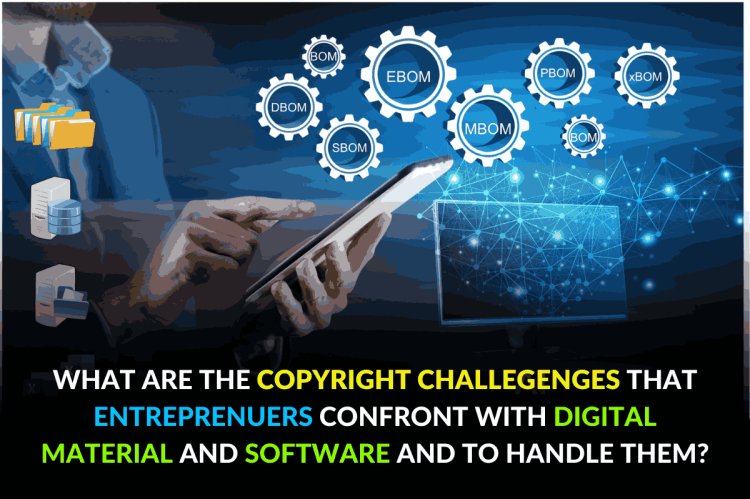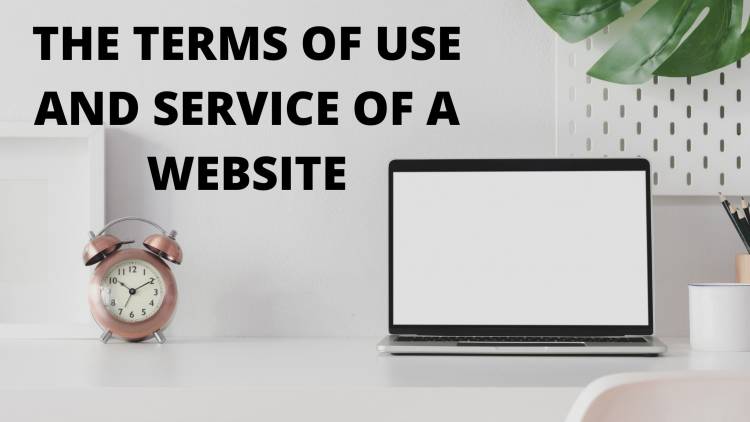WHAT ARE THE COPYRIGHT CHALLEGENGES THAT ENTREPRENUERS CONFRONT WITH DIGITAL MATERIAL AND SOFTWARE AND TO HANDLE THEM?
In the digital era, copyright infringement poses significant challenges for entrepreneurs. Unauthorized use of digital content, including software, multimedia, and social media assets, threatens intellectual property rights. Effective copyright management, including legal compliance and technological safeguards like digital watermarks and block chain, is crucial for protecting entrepreneurial creativity and innovation.

INTRODUCTION
With the advent of technology, there has been ease in distribution and sharing of content. Earlier the internet boom in 2000 and presently the use of artificial technology has completely altered the scenario when it comes to availability and use of the material on digital platforms. Now, everything is available online in the form of e-books, sound recordings on apps like Spotify etc., movies are freely accessible on various platforms. Thus, these changing scenario have caused a major threat to authors and owners of these works. The copyright challenges in digital market are also faced by the entrepreneurs running a business dealing in works on which copyright is granted.
CHALLENGES UNDER DIGITAL WORLD FOR COPYRIGHTED WORKS
· PUBLIC ACCESSS: Since now every work is available online and there is ease of transfer, the works are in public domain. User’s think whatever work is available online is free to use. Music, books, etc. are available online can be easily shared, irrespective of the fact who possess ownership rights in the copyrighted works. Moreover, there is considerable unauthorized use of copyrighted works say for example torrent allowed downloading of pirated movies.
· Identification impossible: Once the material is online and shared, it becomes very difficult to know from what source it was leaked. Thus, the anonymity on internet makes it difficult for original authors/owners of copyrighted work to track the real culprit.
· Ownership challenges: Since the works are available digitally it becomes sometime difficult to establish ownership over the works. This issue can specially arise when works are produced in a collaboration. Thus, if there are several creators involve, establishing ownership would become difficult.
· Work based on Previous work: In copyright law there are derivate works, which are inspired from the original work. But if the derivate work is completely based on the original work it would constitute copyright infringement. But in the digital age and use of AI it has become difficult to identify as to how much derivation has resulted into the present work. Thus making the lines blur.
HOW WORKS ARE INFRINGED IN DIGITAL ERA INVOLVING BUSINESS
· SOFTWARE PIRACY: There has been various trends observed where programs of a particular company are copied and a new version is developed. It can occur via copying, exporting-importing pirated software, renting software etc. One such example of business world is case of Adobe systems v. SoftMan Products company (2001) wherein licence agreement of adobe was violated and it’s software was sold separately. In another case, US government v Megaulod (2012) a popular site, named ‘Megaulod’ allowed user to copy software, movies etc. The USA government shut down the site.
· USE OF COPYRIGHTED MATERIAL ON SOCIAL MEDIA; We have seen the rampant use of copyrighted works on social media either in the form of content creation or memes etc. Although, copyright Act allows fair use but it is very difficult to determine from the amount of usage that whether such works come under the ambit of fair use or not. In H3H3 Productions Vs Matt Hosseinzadeh (2017), a YouTube channel used videos of plaintiff for commentary purposes. The court held that such use amount to fair use under copyright law.
In another case, named Unicolors v Urban Outfitters (2017), plaintiff was a clothes design company. It shared it design on social media platforms. These designs were copied and used by the defendants in their products. Thus court directed defendant to stop the infringing designs use.
REMEDIES AVAILABLE FOR PREVENTION OF INFRINGNMENT OF COPYRIGHTED WORKS
· Block chain technology: It provides each creation of work with a unique digital signature ensuring identification of original ownership. Thus it becomes difficult for the infringing parties to claim ownership rights over the works. Further, it also makes licensing process easy.
· Digital watermarks: These are in the form of logos or texts which are imprinted on the digital content. It ensures that authenticity of works and prevents tampering.
· Fair Dealing under Copyright law: It means that if a work is covered under the ambit of fair use, it would amount not amount to copyright infringement. Under section 52 of Copyright Act, 1957 lays down when a work would amount to fair use such as teaching, research, non-commercial use of software, backup copies, multimedia devices used in non-commercial scenarios etc.
Case study on Rupa Marya v Warner / Chappell Music (2015): How Entrepreneurs in digital era effected by copyright infringement?
Warner/Chappell Music. The company issued licenses for use of this song in any commercial setting or for any public performances. Jennifer, an independent filmmaker, used this song in a documentary without any authorization. His argument was this song was in public domain plus a very high fees was charged by music label.
The court ruled that proper assignment of song was not done to Warner company. In a way the decision impacted the entrepreneurs as it saved them from paying high license fees and thus provide relief to entrepreneurs and independent creators in digital world involving copyright infringement.
CONCLUSION
Rise in technology comes with its own pros and cons. The debate in the digital era basically rests in two aspects that is balancing the rights of the copyright owner and access to public. If we consider, the aspect of growing business in this regard- such business can act as an infringer or can be a subject of copyright infringement. If suppose a digital creator work is good on digital platform but he is not very popular, anyone can copy his/her work and utilized it, such person would find it difficult to enforce his rights, maybe due to lack of awareness or the extent of infringement caused. On other hand, if an entrepreneur, can copy the copyrighted works available in digital world and utilized it for his business growth. Copyright act need proper mechanism to address such issues.












